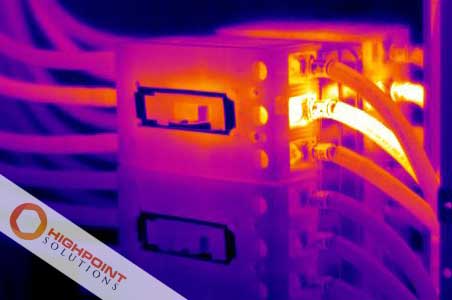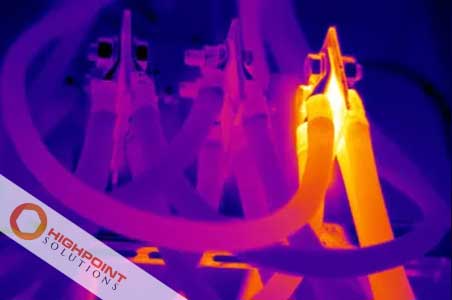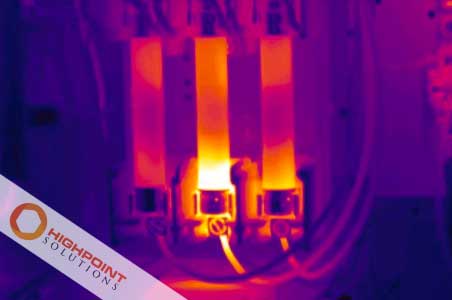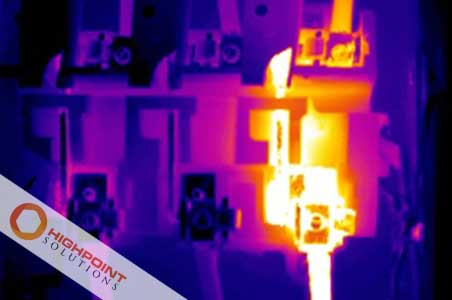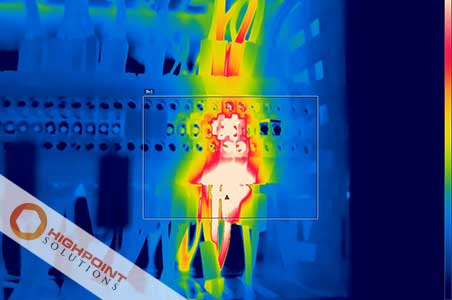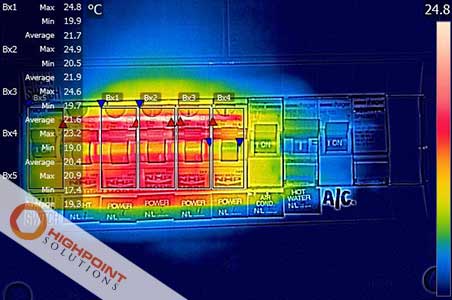
Diagnosing Electrical Problems Safely With Thermal Imaging
Electrical switchboard thermography detects heat emitted by life forms and inanimate objects. Electrical problems are usually the result of failing electrical connections, although there are exceptions we outline here. We can diagnose electrical problems safely with live thermal imaging, because we do not make physical contact with the installation.
Detecting Electrical Problems Safely With Thermal Imaging - The Basics
Most electrical thermography cameras on the market are robust and simple to operate. Moreover, economies of scale and robotics have brought their prices down to affordable levels. If you can take a photo with your smartphone, you could work a thermal camera. However, it does take an experienced eye to interpret what you see.
The front end involves scanning the object to detect (any) hotspots or thermal anomalies, and then capturing images of anything that stands out. These images can upload to a computer via a USB cable for detailed analysis later. You could also forward them to a specialist with experience of root-causing electrical problems safely with thermal imaging.
Drilling Down Into Electrical Problem Detection With Thermal Cameras
Operating a thermal imaging camera a safe distance from a live electrical installation is safe, all other things being positive. However, it is still best to have a qualified electrician with you while you work. It can be even better to leave the survey to a skilled and certified technician, especially from an insurance liability stand-point. Certified thermographers know what they are looking for, can understand and interpret the thermograms (thermal images), and can detect any possible imminent electrical fire. At Highpoint Solutions, we have electrical thermography Sunshine Coast based specialists on standby to assist.
Speaking of Safety...
The National Electrical and Communications Association of Australia set guidelines for safety when working with live electrical equipment. Essentially, these require protective clothing when standing before a live panel. We take the following with us everywhere we do electrical thermographic inspections. Actual requirements vary on the ground.
Safety helmet, flash-rated face shield, class 5 hearing protection
Insulated leather boots and gloves, fire resistant clothing
The Significance of Loading
An electrical load is a device or portion of a circuit that consumes electricity in order to work. This is distinct from mains supply, or a battery or generator that delivers the energy. We cannot analyse electrical problems safely with thermal imaging successfully if the load is off at night or over weekends. We need at least 50% of the installed load live, in order to do our job.
How Emissivity is Important
Thermal imaging cameras (infrared cameras) detect infrared energy emitted from objects. This normally follows defined thermal patterns, and we look for exceptions indicating possible electrical faults. Emissivity is relative since not all materials have the same characteristics. An emissivity ‘value’ between 0.0 – 1.0 is the ratio of infrared energy radiated from an object to that emitted from a black body object under the same conditions.
High emissivity objects have low reflective properties (E.g. electrical insulation)
Low emissivity objects have high reflective properties (E.g. stainless terminal)
This can result in inaccurate analysis by a newbie
Remember, a thermal imaging camera only reports what it sees in the infrared portion of the electromagnetic spectrum. Hence, the surfaces of objects play an important role, when assessing electrical problems safely with thermal imaging from a distance.
Objects coated with matt paint have a very high emissivity factor
Electrician’s tape, ceramic insulators, and rubber also have relatively high emissivity values.
However, copper, aluminium, and stainless steel can have very low emissivity values, especially if the surface is polished.
How to Go About a Thermal Imaging Scan Systematically
Fuses, Connections and Wires
Start by scanning electrical connection points where wires join to devices, or devices plug into each other. Overtight, loose, and corroded joints increase resistance, and hence heat. The thermal image is therefore ‘hottest’ at these points, while ‘cooler’ on either side and will generally display a thermal gradient typical of a “hot-spot”. Broken and below-specification cables can also emit abnormal heat.
A circuit breaker that reads noticeably hotter during thermal imaging is under exceptional load. However, this is usually due to a problem elsewhere in the circuit. Trace the network in the wiring diagram to identify potentially defective devices and scan them. An abnormally cool circuit breaker suggests it has failed. Ask a qualified electrician to investigate further.
Remember to look for differences between similar devices and similar thickness wires. If they do not emit approximately matching heat when viewed through a thermal imaging camera, then you may have found something wrong. In a nutshell, that’s the purpose of scanning for electrical problems safely with thermal imaging as we describe here.
Imbalances in 3-Phase Networks
Motors, their controllers and other electrical equipment are unreliable when operating on unbalanced voltages between phases. Any variances above 4% are cause for concern, and require resolution. To check for three-phase imbalance, begin by capturing images of distribution panels, drives, switches and so on.
Open each compartment on a motor control centre. Scan breakers, bus bars, controllers, contactors, disconnects, fuses, feeders, starters, relays, and transformers for relative overheat. Much of the information elsewhere in this article applies to motor control centres too.
Upload the electrical switchboard thermography images to a computer. Compare the three phases side-by-side to look for inconsistencies in scanned temperatures. A relatively heavily loaded phase will display hotter on the image. Scanning electrical problems safely with thermal imaging cameras is the safest way to make this comparison on a live network.
It is important to take identified problems further. Have an electrician perform power quality tests to bottom out on what is causing the anomaly. Your thermal images will make a useful contribution to the exercise. They could lead to cheaper, faster resolution.
However, remember that other electrical problems could produce the same apparent differences. A component might have failed, or a contractor might have installed undersized connectors. These are reasons tending towards using a seasoned professional when needing electrical thermography.
Thermally Imaging Transformers
Transformers are a huge topic on their own. Suffice to say the static devices step voltages up and down. They may also convert direct to alternating current and vice versa. These processes can generate high heat depending on the application. Oil-filled transformer fires plague the distribution industry.
Oil-filled transformers use the liquid to transfer heat away from fans, pumps, and circuit connections to cooling tubes. Scanning these components may indicate overheating oil. Cooling tubes around transformers should never be above warm, if the system is functioning normally.
Overheating transformers may halve their operating life. The manufacture’s data plate should indicate the acceptable range. Remember a transformer is much hotter inside than its surface emissions. If any doubt, leave the room, close the door, and call for expert advice.
Detecting Electrical Problems Safely With Thermal Imaging - Wrapping Up
Remember to repeat a thermal imaging scan of relevant parts of the installation after a qualified electrician has resolved concerns. We recommend they are present during follow-up electrical thermographic inspections so they can then, for example tighten any overlooked loose connections. You will save considerable time this way, and you will not have to call them back a second time.
Thermal imaging cameras are essential equipment for any facility or building manager. They enable electrical safety checks in business hours without affecting tenants or public in any way. If there is a potential problem, thermal imaging directs the electrician’s attention immediately to the problem. Repair downtime is reduced, and they bill less for their time.
Highpoint Solutions are local in Eumundi, Sunshine Coast, Queensland, but we regularly conduct electrical thermographic inspections throughout Brisbane areas. Give us a call on 0407 202 064, or send an email to us. We would appreciate the opportunity to demonstrate how thermal imaging could reduce your maintenance expenses, with added layers of industrial safety.
Follow us on Facebook: www.facebook.com/HighpointSolutionsAustralia
Connect with us on LinkedIn: www.linkedin.com/in/justin-dravsnik
Follow us on Twitter: www.twitter.com/justin_dravsnik
Recent Posts


